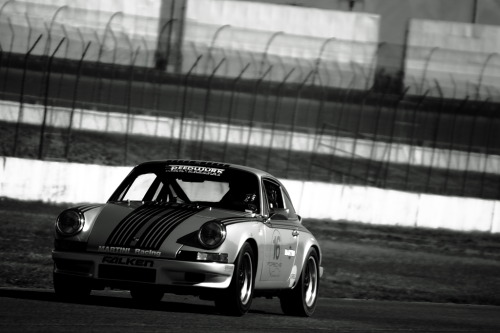
This piece by William F. Buckley Jr. appeared in the January 17, 1959, issue of National Review. (You can dig into NR’s archives anytime here).
(From a question and answer booklet issued by The Alumni Council of Princeton University, June 1, 1958.)
QUESTION: Why don’t Princeton undergraduates look as glossy as they used to? Is it because the admissions people frown on well dressed, social-looking young men?
ANSWER: Certainly not. Since the war, Princeton undergraduates, like those in other colleges, have gone out of their way to wear beat-up clothes. It’s a fad the GI’s started.
If I had been permitted to butt in with the next question, I’d have asked, “What would you do if the next fad called on the students to go about naked?” The answer would presumably have been as evasive as the first, probably something like, “My dear sir, there are laws against indecent exposure.” To be sure, and there are none against wearing sweat shirts in a venerable university eating hall, or in a classroom where the lecture that morning may be on the age of elegance; none, even, governing dress in fraternity houses where, it is commonly supposed, it is the elite who meet to eat. The reason? Rules affecting a student’s dress are...
But let me relate an experience. At Yale, ten years ago, there gadded about a distinguished professor of philosophy with a mania for equalitarianism. Notwithstanding, he was himself a man of personal taste, of imposing countenance and erect bearing, and one day he decided it would be reasonable to expect members of his college (undergraduate Yale is quartered in ten colleges) to come to dinner at the college dining hall dressed in coat and tie. Accordingly, he laid down the edict. Hours later, a student had summoned fellow members of the college student council in extraordinary session to devise appropriate means of resisting the act of tyranny. In due course the president of the council appeared before the guileless master and announced that it was the consensus of the student council that the ordinance he had passed was undemocratic. The master did not reply (such a reply would not have occurred to him, even as a lascivious possibility) “Tell the student council to go—eat democratically some place else.” No, our professor of Philosophy simply rescinded his order, aghast at the revelation that, albeit subconsciously, he had entertained an Undemocratic Thought.
It is the knout of Democracy that is most generally used to flail those who believe the administrators of a college are entitled to specify, nay should specify, norms of undergraduate dress. The economic argument, implausible though it increasingly becomes, is still widely used. It holds that coats and ties are expensive, that therefore the uniform requirement that they be worn daily, and hence worn out prematurely, is a form of regressive taxation. The argument is unrealistic because in point of fact ties do not cost very much, and coats made out of a tough material will outlive even a pauper’s inclination to wear them.
It is something else, really, that prevents the deans and masters from acting. They fear, in an age of permissiveness, the howl of protest. The dean of the Graduate School at Yale said recently, “The attire of students is incredibly sloppy. It would be fine if we could get away with a rule requiring ties at all meals. A good thing to press for in my retiring years.”
Must we wait until the Dean retires? Let us hope not. Meanwhile, I make a few observations. The first: Does not insistence on a minimal standard of dress reflect a decent respect for the opinions of mankind? The same community that insists that one pay at least a procedural respect to the opinions of ideological aberrants can hardly be expected to shrink from deferring to society on the appropriate means of clothing one’s nakedness. Even in the world of getting and spending, for whose coarseness a considerable contempt is stimulated in many colleges and campuses, coat-and-tie is a prerequisite to participation. The Beats who indulge their sloppiness as a symbol of their individualism can take the measure of their hypocrisy by reflecting on their imminent surrender — effective on the day they graduate into the world of commerce in which, almost to a man, they fully intend to spend their lives. The young graduate who informs Merrill Lynch, Pierce, Fenner and Beane that to require coat and tie is undemocratic, can expect a most un-Philosophic reply. I doubt, going further, that there is a Princeton undergraduate who would presume to call on Jack Kerouac without coat and tie. If disorderly attire is a genuine symbol of personal independence, then the college generation should stick by their symbol at least a few decorous weeks after the ink is dry on their baccalaureate degrees. If it is not that, then dishevelment is what it is: a blend of affectation and laziness.

The second point for the academic community to think over is the matter of authority. Is it theirs to stipulate a minimal standard of dress? Professor Joseph T. Curtiss of Yale said recently, “Respectful or respectable dressing is a characteristic of adult society. Some people are born gentlemen, other people acquire gentility during life, still others must have it forced on them.” The tendency is to depreciate the beneficence of externally imposed norms of civilized behavior. There are many who, like myself, would, if left alone, permit our standards of personal dress to deteriorate to the level of the downright offensive. Conscientious members of society — and I include here, intending no offense, administrators of our colleges and universities — should not permit us to indulge our disintegrative proclivities. Coat-and-tie is merely a symbol. It could be courtesy; deference; reverence; humility; moderation: and are these not, all, the proper concern of a college administration? Is there a relationship between a faculty’s weakmindedness, and a student body’s disorderliness?




























